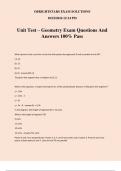Exam (elaborations)
Solution Manual for Principles of Corporate Finance 14th Edition by Richard Brealey, Stewart Myers, Franklin Allen and Alex Edmans, Complete Chapter 1 - 34 | Newest Version
Solution Manual for Principles of Corporate Finance 14th Edition by Richard Brealey, Stewart Myers, Franklin Allen and Alex Edmans, Complete Chapter 1 - 34 | Newest Version Solution Manual for Principles of Corporate Finance 14th Edition by Richard Brealey, Stewart Myers, Franklin Allen and Alex...
[Show more]





